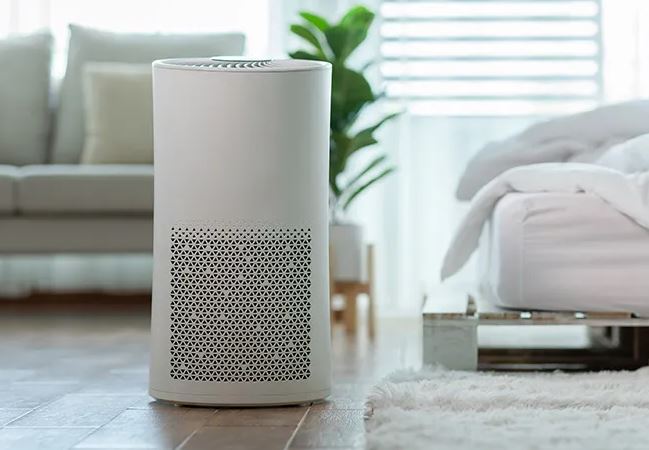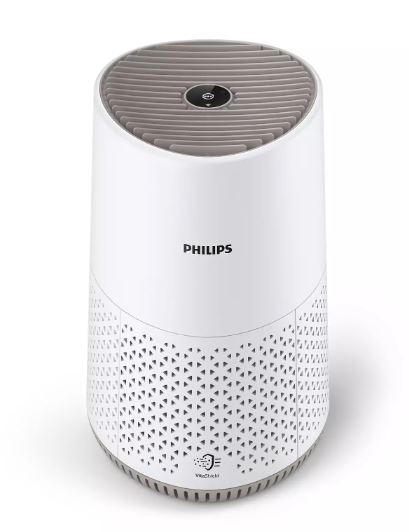Air Purifiers for Pet Owners: Say Goodbye to Dander and Odor
Air Purifiers for Pet Owners: Say Goodbye to Dander and Odor
Blog Article
In a health-conscious world, the quality of the air we breathe has taken center stage for individuals across the globe. With increasing environmental pollution and a deeper insight of the impacts of indoor air quality on our health, it's no surprise that the demand for air purifiers is on the rise.
Air purifiers are devices that eliminate airborne contaminants in a space, improving indoor air quality. They are particularly beneficial for individuals suffering from allergies, asthma, and respiratory conditions as they can significantly reduce the presence of allergens, pollutants, and irritants in the air. Healthy individuals, too can rely on the added protection of air purifiers, as they provide reassurance and safeguard against airborne diseases.
This comprehensive overview will dive deep into the fascinating realm of air purifiers, discussing the perks they offer, the variety of options on the market, key considerations when choosing a purifier, and maximizing your air purifier's potential. By the end, you should have a solid comprehension of air purifiers and be able to choose wisely about whether investing in one is the right choice for your household.

Decoding Air Pollutants and Their Impact on Health
To understand why air purifiers are essential, it's key to comprehending the kinds of pollutants they target and the likely impact of contact with these pollutants.
Indoor air pollutants can be broadly grouped into three main types:
- Particulate Contaminants: This includes tiny solid and liquid particles suspended in the air. Examples include pollen, smoke, dust, pet dander, and mold spores, to name a few. Particulate matter can lead to respiratory complications and cause allergic flare-ups.
- Understanding Volatile Organic Compounds: VOCs are gases released by solids and liquids. Sources of VOCs include paints, cleaning products, aerosol sprays, and pesticides. Exposure to VOCs can lead to eye, nose, throat irritation, headaches, and stomach discomfort.
- Biological Contaminants: These include bacteria, viruses, mold, and mildew. They can cause a range of health issues, from mild allergic reactions to severe infections.
The impact of these contaminants on human health can differ considerably. For individuals with respiratory conditions or compromised immune systems, exposure to indoor air pollutants can lead to significant health complications. Even those in good health, prolonged exposure over time to certain pollutants can contribute to the development of respiratory issues and other health problems over time.

The Science Behind Air Purifiers
Air purifiers use a combination of physical and chemical processes to capture and remove pollutants from the air. Understanding the underlying principles employed by purifiers will help you appreciate their effectiveness and the variety of options on the market.
Here are the key processes and technologies used in air purifiers:
- Mechanical Filtration: This is the most common method used in air purifiers. It involves using specialized filters to capture particles as air is drawn into the purifier. The filters can be made from various materials, each designed to trap particular particle types. For example:
- Initial Defense: Pre-filters: These are usually the first line of attack, trapping bigger contaminants like dust and hair.
- HEPA Filtration: Unparalleled Performance: HEPA filters are highly effective at capturing microscopic particles, including pollen, dust mites, and some bacteria and viruses. To be labeled a bona fide HEPA filter, it must trap a minimum of 99.97% of particles down to 0.3 microns in size.
- carbon filtration: These filters are designed to adsorb odors, VOCs, and gaseous pollutants.
- Ionizers: Ionizers use electrical charges to create ions with a negative charge, which bind to particles in the air. The charged particles then stick to nearby surfaces or are attracted back to the purifier.
- Ozone's Double-Edged Sword: Some air purifiers use ozone as a powerful cleaning agent. While effective, ozone can also be harmful to human health so these types of purifiers should be used with caution and only in unoccupied spaces.
- UV Light: Shining a Light on Purification: UV light can be used to neutralize bacteria, viruses, and mold spores. UV light and filters: a dynamic duo to capture particles first, followed by UV light to neutralize any remaining biological threats.
Choosing the Right Air Purifier
With a wide array of options available, selecting the ideal air purification system can be a daunting task. It's important to consider a range of criteria to ensure you make the correct choice for your unique requirements and space.
Here are some crucial points to consider:
- Room Size: Air purifiers are typically rated according to room size, so it's important to choose a model that can efficiently purify the air in the designated space. Most purifiers will list a suggested room size or CADR rating, which indicates the amount of purified air circulated per minute.
- Understanding Contaminants: Identify the types of pollutants you want to target. If you suffer from allergies, look for a purifier with a HEPA filtration system. For reducing unwanted smells, consider a model with a carbon filter. If you're concerned about viral and bacterial threats, a purifier with UV light disinfection might be best.
- Noise Level: Air purifiers can produce a range of noise outputs, so if you plan to use it in a serene environment, look for models with a quiet mode for undisturbed rest.
- Maintenance and Costs: Consider the regular maintenance and associated costs of the purifier. HEPA filters, for example, typically need to be replaced every 6-12 months, depending on use and environmental factors. Factor in the cost of replacement filters when making your choice.
- Enhancing Your Experience: Many purifiers offer innovative smart capabilities like automatic modes, air quality monitoring, and wireless control, allowing remote control and monitoring. These features can enhance the convenience and effectiveness of your purifier.
Unlocking the Full Potential of Your Air Purifier
Once you've chosen and set up your air purifier, there are several things you can do to ensure it operates at optimal levels and delivers the optimal results:
- Optimal Placement: Position your purifier in an open area, away from walls and furniture, to ensure efficient air circulation. Avoid placing it near open windows or doorways as drafts can impact its efficiency.
- Keep it Running: For the best results, it's recommended to run your purifier around the clock. Many models have automatic or low-power settings that adapt to the air quality, so you can maintain healthy air quality while conserving energy.
- Filter Maintenance: Regularly adhere to the recommended filter replacement schedule. Over time, filters become filled with trapped particles, impacting performance. Schedule filter replacements so you don't forget.
- Limiting Indoor Pollutants: Alongside using an air purifier, take steps to minimize indoor air pollutants. This could include frequent dusting and vacuuming, opting for natural cleaning solutions, and reducing chemical or aerosol usage. Report this page